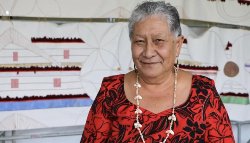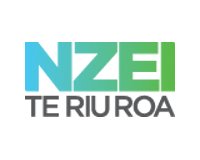UV Index Warns Of Deadly Radiation
UV Index Warns Of Deadly Radiation
This October, New Zealanders are being introduced to a new scientific measure to help them protect themselves from the risk of skin cancer.
It is an international, scientific measure developed by the World Health Organization called the UVI (Ultraviolet Index). Replacing the formerly used “Burn Time”, it is supported by the Cancer Society, the Health Sponsorship Council’s SunSmart brand, the National Institute of Water and Atmospheric Research (NIWA), the MetService along with academic institutions.
It is expected the new information, delivered via a dial inspired by that used by the New Zealand Rural Fire Service, will be in wide use by television and radio weather presenters and in printed material by Labour Weekend.
Cancer Society spokesperson Wendy Billingsley says nearly 300 people die from skin cancer and more than 50,000 cases are diagnosed in New Zealand each year. The cost to the health system is believed to be more than $33 million annually.
“If people don’t know when they are at risk, they can’t protect themselves. The UVI is a scientific measure of radiation from the sun – that radiation causes skin cancer.”
In summer, New Zealand typically receives about 50 percent more UV than similar latitudes in Europe, Ms Billingsley says.
The UVI information New Zealanders will receive will be presented in a way that reflects the World Health Organisation’s recommendations, but has been modified to reflect New Zealand’s unique conditions.
“We have developed new graphics similar to the well understood Fire Service. What we have also done - a world first - is directly linked the UV levels with appropriate behaviours. This means people not only know the risks – they know what action to take to protect themselves,” Ms Billingsley says
The UV Index measures ultra violet radiation levels from 1 to 11+.
Levels 1 and 2: In the green band, levels one and two, the UV level is low. Low protection is needed and people can safely stay outside. Information will be presented as, for example:
2 LOW – No protection required. You can safely stay outside.
Levels 3 to 5: The yellow band, numbers three to five, indicates moderate UV levels. Protection is required when spending long periods outside. Information will be presented as, for example:
5 MODERATE – Protection required when spending long periods in the sun.
Levels 6 and 7: Protection is essential at levels six and seven, represented by an amber band. Kiwis will be advised to follow the Cancer Society’s slip, slop, slap and wrap behaviours. Information will be presented as, for example:
6 HIGH – Protection essential. Slip, Slop, Slap, and Wrap
Levels 8 to 10: When UV levels are in the very high red band, eight to ten, it’s recommended people seek shade between 11am and 4pm, slip, slop, slap and wrap and make sure they reapply sunscreen at least every two hours. Information will be presented as, for example:
9 VERY HIGH – Seek shade between 11am and 4pm. Slip, Slop, Slap, and Wrap. Re-apply sunscreen regularly
Level 11+: Levels of 11 or higher, shown in a purple band, are regarded as extreme and the Cancer Society’s advice is reschedule activities for the early morning and evening. Full protection is essential between 11am and 4pm. Information will be presented as, for example:
11 EXTREME – Reschedule outdoor activities for early morning/evening. Shade essential between 11am and 4pm. Reapply sunscreen regularly.
Ms Billingsley says as well as being aware of the UV levels, people need to be aware of their individual skin type and adopt behaviours appropriate to that.
“For example I have very fair skin, so when the UVI is in the moderate yellow band, I would take care to wear sunscreen and a hat and seek out shade where possible. But my son has an olive complexion so I’d only worry about him in moderate UV if he were out in the sun for long periods.”
For an individual assessment of risk a website has been developed, linked to the MetService database, where people can find out what the UV levels in their area will be and then enter their age and skin type to find out what behaviour they should be following.
Why is New Zealand at Risk
New Zealand’s clean, clear air is one of the reasons it is so highly regarded in the world, but it also puts kiwis at greater risk of UV radiation skin damage, explains MetService Market Manager Media, Chris Stephenson.
“The UV rates here are significantly higher than those of countries at similar latitudes.
“People sometimes say Australia must be worse off than New Zealand, but that’s not actually the case. Because it is continental, rather than a maritime country surrounded by sea like New Zealand, Australia is much hotter than New Zealand. It is so hot, people seek the shade or stay indoors when the UV is highest. But in New Zealand it’s not so hot, so people tend to go outdoors to soak up the sun.”
Mr Stephenson says it’s a matter of changing people’s behaviour.
It’s also a matter of education.
“While thick cloud will protect people from UV radiation, light cloud does not. People think because it’s overcast, they can’t be damaged and that’s even more dangerous because they spend long periods outdoors unprotected. But if they check the UV Index, they will know when they are at risk.”
The groups working together to introduce the UV Index have had a very positive response both to the graphics and behaviours as well as the need for change, Mr Stephenson says.
Why Change from Burn Time?
Since 1989, the New Zealand Meteorological Service has advised New Zealanders of risk by referring to “burn time” (BT).
The measure, in units of minutes, was of the time it would take for skin to burn if exposed, unprotected, to the sun.
But Ms Billingsley says the BT method was confusing and potentially dangerous.
“With so many different skin types in New Zealand, the time in which a fair skinned person would burn might be quite different from that of an olive skinned person. There is also the perception that if, for example, BT was 15 minutes, people could stay safely in the sun for 14.5 minutes which is just not true.”
In introducing the UV Index with associated
behaviours, New Zealand is showing itself to be a world
leader in arming the public with the information they need
to save themselves from life threatening skin
cancer.


 Braden Currie: Sets Sights On The Ironman North American Championships In Texas
Braden Currie: Sets Sights On The Ironman North American Championships In Texas Whanganui Regional Museum: Historic Wedding Dress Unveiled, A Piece Of Marton’s Heritage
Whanganui Regional Museum: Historic Wedding Dress Unveiled, A Piece Of Marton’s Heritage Donovan Ryan: Local Runner Takes Out Frontrunner Christchurch Marathon
Donovan Ryan: Local Runner Takes Out Frontrunner Christchurch Marathon University of Auckland: Tributes Flow For Much Loved Pacific Leader Melegalenu’u Ah Sam
University of Auckland: Tributes Flow For Much Loved Pacific Leader Melegalenu’u Ah Sam NZEI: Ministry Of Education Cuts Will Disproportionately Affect Pasifika
NZEI: Ministry Of Education Cuts Will Disproportionately Affect Pasifika Day One Hapai te Haeata: Call To Action For Young Filmmakers Against The Backdrop Of Funding Cuts
Day One Hapai te Haeata: Call To Action For Young Filmmakers Against The Backdrop Of Funding Cuts